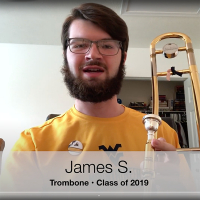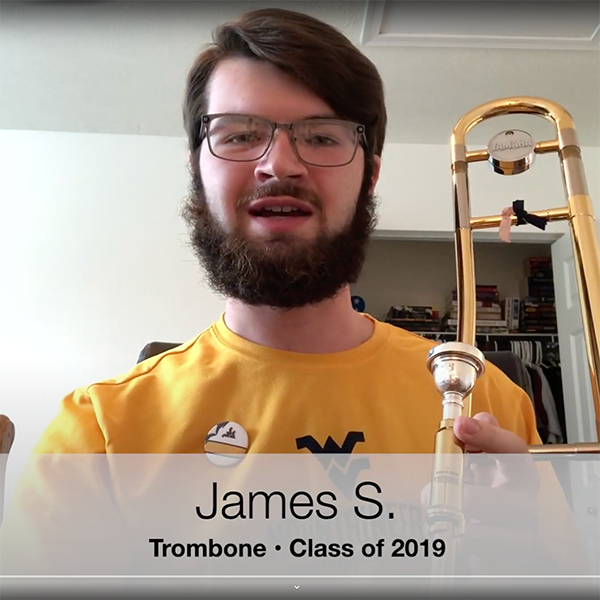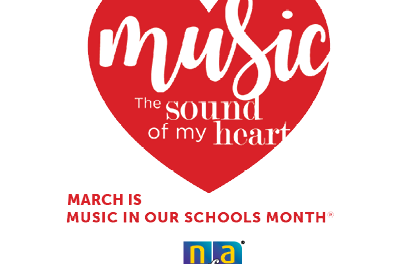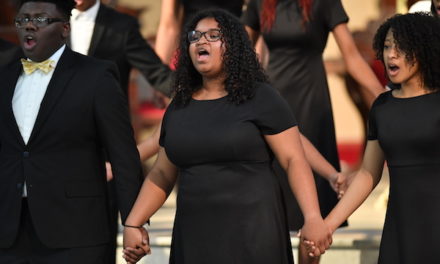
You know how important music education is, but unfortunately, not everyone does. Whatever your role may be, it’s hard to advocate for your school music program when it feels like you’re the only one speaking. Now throw in the consequences of a global pandemic, and it’s harder still. Directors may not be able to meet in person with prospective students, and annual instrument petting zoos aren’t possible. Established recruitment strategies are out of the question.
How can you grow your program—or even maintain it—under these conditions?
Challenge students, past and present, to step up. Ask those who know the benefits of your program to share their positive experiences with the world by giving testimonials!
These testimonials will serve as evergreen pieces of content that you can point to for years to come. Share them with incoming students, parents, and other stakeholders—anyone who could be invested in the success of your program. Testimonials can function as social proof, showing that your program produces responsible citizens. Prospective students and their parents will look to them for a peek into their own futures. For current students, testimonials can reinforce the good choices they made when they joined your program and may help you retain them even longer. They’ll remind alumni and other community members of the value of your program and will inspire them to advocate for music education in your district.
Plus, they’re a dynamic activity that can be executed in any learning environment—in-person or remote, individually or as a team—and submitted digitally. It’s also repeatable: each year brings a new incoming class, plus a new class of alumni, and each passing year creates new experiences. Consider doing this project annually as a sort of “exit interview” for your students before they leave for summer break. Then, watch your library of testimonials—and your entire music program—grow.
Testimonials, as well as other advocacy initiatives, can be made even more effective with the incorporation of Social Emotional Learning (SEL)! Dr. Scott N. Edgar has provided information about SEL, as well as, SEL-related advocacy prompts to incorporate into your testimonials project. Check these out later in this article!
Ready to being mobilizing your students? Let’s do it!
Follow these steps to implement testimonials into YOUR advocacy strategy:
- Choose a medium
- Video: Video is the gold standard of testimonials. Viewers can see and hear from each student, and short videos are the ultimate in shareable content. Horizontal or vertical? Horizontal works well for YouTube, Vimeo, Facebook, and Twitter, while vertical is better for Snapchat, TikTok, and the stories feature on all platforms. Choose a location where ambient sounds in your background won’t distract the viewer. It could be extra compelling to choose a background and/or props that illustrate a student’s experience: shoot in a rehearsal room, hold an instrument, wear an ensemble tee shirt or jacket, or hang music medals and certificates behind you.
- Written: Some people aren’t comfortable on camera or just think better when they put their thoughts on paper. That’s great! Students can write out responses to prompts in as much detail as they wish. These excerpts can appear in letters or reports to the school board, as a blog post, in email blasts, or as text-only posts on social media. Or perhaps…
- Audio: Students can create an audio file of their thoughts. This way, we can accommodate those who aren’t comfortable on camera while still allowing them to use their voices to advocate for music education. Their thoughts can be read from the page and recorded for a polished performance. To share these, they can be made into videos for social media. Create a montage of still photos or compile “b-roll” video of your program, featuring the audio testimonial (and perhaps an inspirational music bed) underneath.
- Note: for audio and video content, consider adding closed-captioning. Not only does it make your content more accessible for those who need it, but captioning is also a boon to those who are served muted auto-play videos, or who are watching videos publicly without headphones. (They’d never do that in CLASS, though, right?) There are a number of apps you can use, like Threads, Cliptomatic, and MixCaptions.
- Communicate Clearly – no matter which medium students choose, their testimonial should include the following
- Introduction
- Name
- School
- Instrument or Section
- Current Role (member, section leader, drum major, alumni, etc.)
- Prompts
- Choose 1 or 2 Testimonial Prompts (downloadable at the end of this article) OR
- Explicitly address an SEL Advocacy Point (outlined below – choose one of the bullet points to address) OR
- Both!
- Call to Action – choose at least one
- Enroll in a music class
- Contact your administrator or school board
- Donate to the music boosters
- Write a letter to the editor
- Share a social media graphic and/or hashtag
- Remember: the ultimate goal is making a compelling case for why the audience should take action that will benefit your music program.
- Introduction
- Distribution
- Different methods of distribution will require different approaches. Remember to work smarter, not harder – plan your content distribution in such a way that it can be maximized for multiple platforms and repurposed for several years. Consider what time of content you’ve received and what platforms would fit best.
- For the ease of social media sharing, consider keeping videos under 60 seconds. They can always be edited together to create longer content for sites like YouTube. Consider one long video for testimonials from the class of 2021, or from the trombone section. If sharing on Facebook, consider uploading the video directly to Facebook instead of sharing a YouTube link.
- Besides sharing on social media, make sure it gets to those people who need to see it. Show videos at virtual music booster meetings. Email them to the families of incoming students. Have students read their written testimonials live at a school board meeting. Include them in a state of the music program address.
- When you share them, be sure to tag them with #AdvocacyNow so Music for All can help boost your signal! A testimony about the positive impact of music education advocates just as powerfully across America as it does in your own district.
Once your testimonials have been shared widely, share them again.
Not right away, of course, but these are valuable pieces of content that deserve to be seen over and over again. Share different testimonials to different platforms at different times. Depending on how many you get from students, you can share one on your social media channels every few days or every few weeks. Take a look at a calendar and make sure you share them widely just before important decisions are made, like school scheduling or school board budget meetings.
Bonus: How to incorporate SEL into your advocacy strategy
Advocating for Music Education using Social Emotional Learning (SEL)
SEL represents a widely-accepted construct that administrators and policymakers at all levels value. Music teachers need to have a plan to capitalize on Musical SEL. While SEL is inherently possible in music classrooms, intentional, embedded, and sustained implementation is necessary to:
(a) maximize social and emotional benefits for students, and
(b) effectively advocate to policymakers and administrators for the value of music education utilizing SEL.
To effectively make an argument, all elements of SEL are needed. Realizing the personal/collective value of music education (self-awareness/identity), understanding how this value will be perceived by decision-makers (social-awareness/belonging), and promoting music education through advocacy (responsible decision-making/agency) culminate in a cohesive SEL process and thoughtful argument. Engaging students in this process not only lends relevance to music education’s value, but also models/teaches students these important skills while forwarding the cause for music education.
Compelling arguments for music education utilizing SEL are:
- Purposeful integration of SEL into music education will enrich the students’ personal connection to music.
- The relationship built between teacher and students over multiple years of instruction fosters the caring environment necessary to help build school connectedness and foster empathy.
- The perseverance needed to dedicate oneself to musical excellence fosters resilience both in and out of the music classroom.
- Musical creation fosters self-awareness and allows students to develop a greater sense of autonomy and emotional vocabulary.
- The collaborative community developed in the music classroom around music-making welcomes discussions and awareness for acceptance and embracing diversity.
- Musicians learn the necessity of personal goal-setting, self-assessment, and accountability as they develop high standards for musicianship and themselves.
- Music education provides developmental experiences that actively allow students to practice and hone social-emotional competencies.
SEL will be front and center for administrators and SEL can provide one solution to help our students cope, heal, and move forward through music. For more information on SEL in music education, see the Music for All Social Emotional Learning website education.musicforall.org/SEL. For more information on advocating for music education utilizing SEL, see this article by Scott Edgar and Bob Morrison in Teaching Music.
Testimonials are powerful tools to recruit new students and to help state the value of your program. Below are some prompts to help students and alumni get started writing or recording testimonials of their own! Happy advocating!
Download Testimonial Project Instructions and Prompts for Students and Alumni




